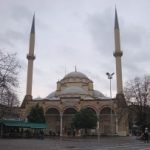The story of the Graeco-Turkish population exchange contains within it the seeds for understanding much of what has happened in Turkey over the last 90-plus years, including the unresolved problem of Cyprus.
During World War I, the weakened Ottoman state made the fatal mistake of siding with the Germans. At the end of the war, in a particularly brazen example of the winner-takes-all mentality, the allied Western powers who had defeated the Germans decided to carve up what had been the Anatolian heartland of the Ottoman Empire amongst themselves. In pursuit of that objective the Greeks invaded what was then Smyrna (now İzmir) on the Aegean coast and fought their way almost to Ankara.
But they had reckoned without the determination of Mustafa Kemal (later Atatürk) and his colleagues who, from 1919 to 1922, fought back until eventually the invaders were quite literally pushed into the sea at Smyrna.
The Turkish War of Independence was brought to an end by the 1923 Treaty of Lausanne that drew up the borders of modern Turkey. But contained within that treaty were the fateful words that brought to an end the continued presence in Anatolia of the last Greek descendants of the Byzantines. According to the treaty, all Greek Orthodox citizens in the new Turkey would have to “return” to Greece, while all Turkish Muslims in Greece would have to “return” to Turkey. Exceptions were made for the Greeks living in İstanbul and on the Aegean islands of Bozcaada and Gökçeada and for the Turks living in Thrace, but for the people of places such as Levissi (Kayaköy), near Fethiye, and similar settlements time had run out. They were forced to pack their bags and leave.
In some parts of the country incoming Turks were soon occupying the homes of the departed Greeks, as was the case, for example, in the Cappadocian town of Sinasos, south of Ürgüp, which was speedily renamed Mustafapaşa. But more Greeks left Turkey (around 1.5 million of them) than Turks left Greece (around 500,000 of them), which meant that some of the old Greek settlements remained empty.
It is a story extensively told in Bruce Clark’s excellent Twice a Stranger and again in fictional form in Louis de Bernieres’ marvellous Birds Without Wings.
